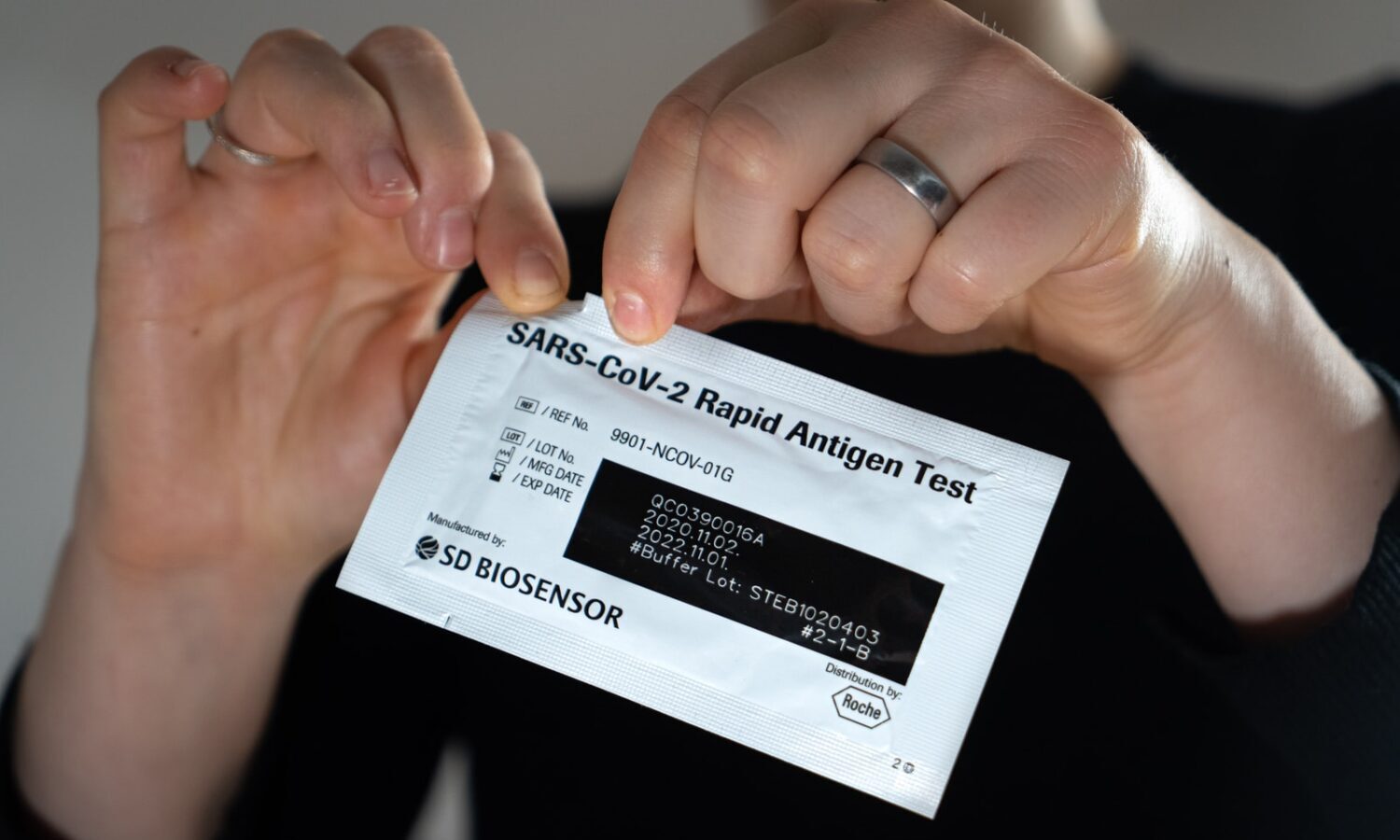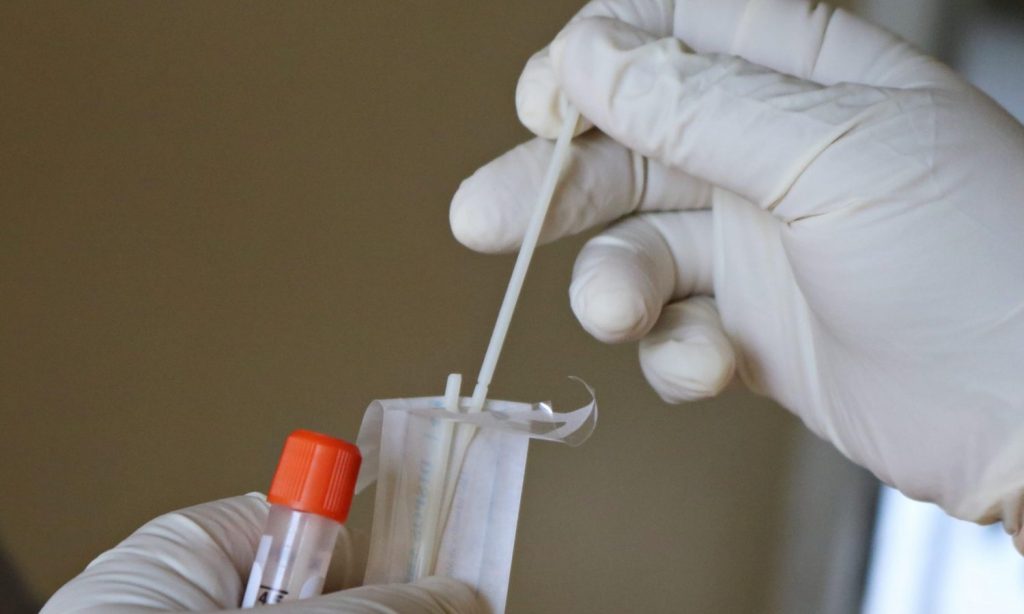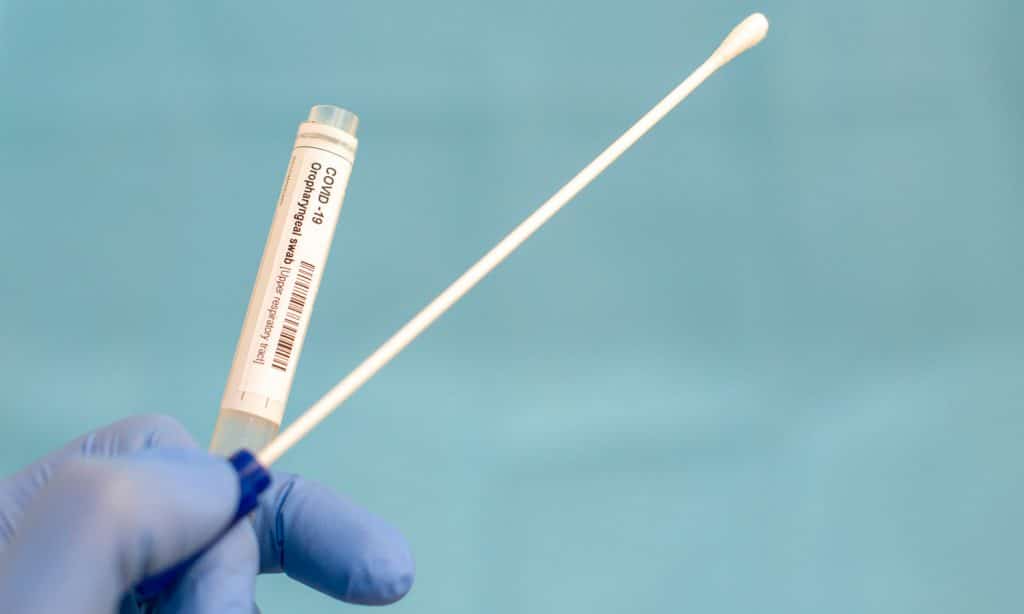
In partnership with The Fresh Toast
People on social media have discovered that doing this might increase the accuracy of at-home COVID-19 tests.
COVID-19 cases are on the rise, with the Omicron variant having most of the country under its grip. While states are clocking in wild numbers of COVID-19 cases, a trend on social media shows that, when it comes to the Omicron variant, a throat swab might provide more accurate evidence than a traditional nose swab.
While this unofficial way of testing for COVID-19 is not approved by health experts, infectious disease experts don’t find these results surprising, especially if the person who’s getting the test has a sore throat.
RELATED: What Is Flurona And Why Is Everyone Talking About It?

When speaking to Insider, disease experts suggest swabbing the throat first and then the nose when doing at home COVID-19 tests. “If you were my friend, I would say to you, ‘Yeah, I would suggest that you swab your throat first and then your nose,’” said epidemiologist Irene Peterson. If the test comes back positive she suggests getting a PCR test just to confirm.
Nose swabs have been the traditional way to test when discussing respiratory viruses, but the Omicron variant might be different, changing the way in which the virus replicates in the body. A December studyfrom South Africa showed that saliva tests were able to pick up on 100% of Omicron cases; nasal swabs were able to detect 86% of them.
Omicron cases are a bit different than previous COVID-19 infections, with one of the most prominent and earliest symptoms being a sore throat. This suggests that people’s throats might be the place where there’s a higher viral load. Then there’s also the fact that a lot of people are vaccinated now, taking longer to develop nasal symptoms and resulting in false-negative nose swabs.
RELATED: Experts Are Now Recommending Wearing This Type Of Face Mask

If you want to be as sure as you possibly can of your COVID-19 status, a throat swab won’t hurt. Allergist Purvi Parikh told the Huffington Post that she suggests avoiding eating, drinking, or brushing your teeth for 30 to 60 minutes before your throat swab.
It’s important to remember that at-home test kits were designed for the nose canal, and to be careful when swiping your throat. Open your mouth wide and gently swipe across the back of your throat, from tonsil to tonsil for several seconds. Try to avoid touching your mouth, teeth, and tongue. You can then proceed with your traditional nose swab.
Read more on The Fresh Toast
Advertising disclosure: We may receive compensation for some of the links in our stories. Thank you for supporting Irvine Weekly and our advertisers.
